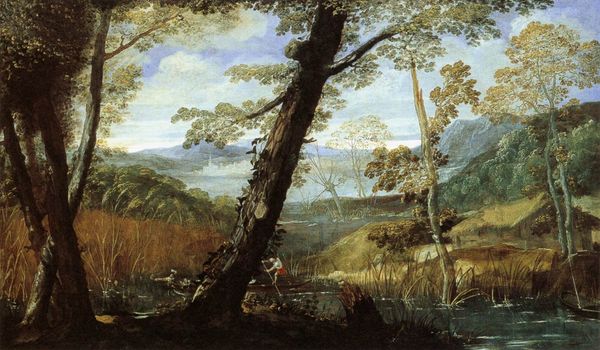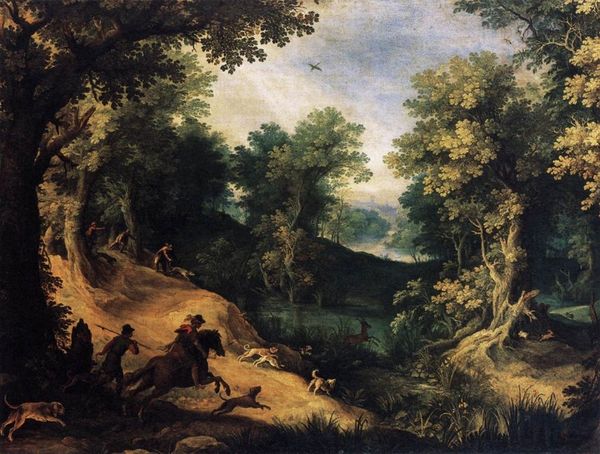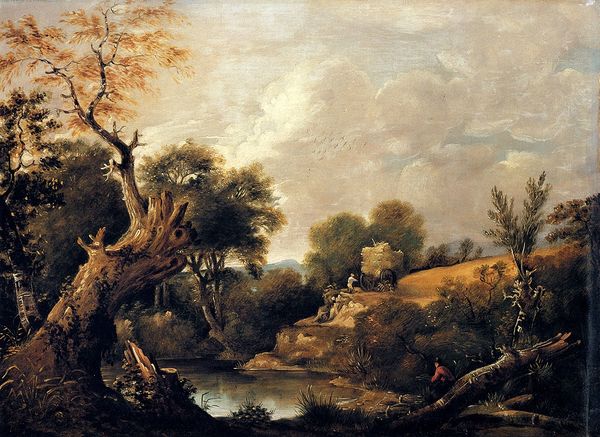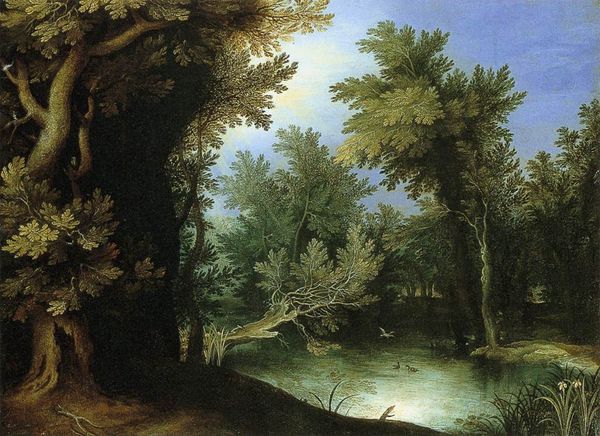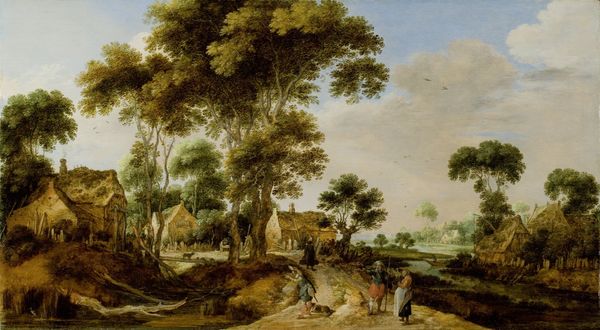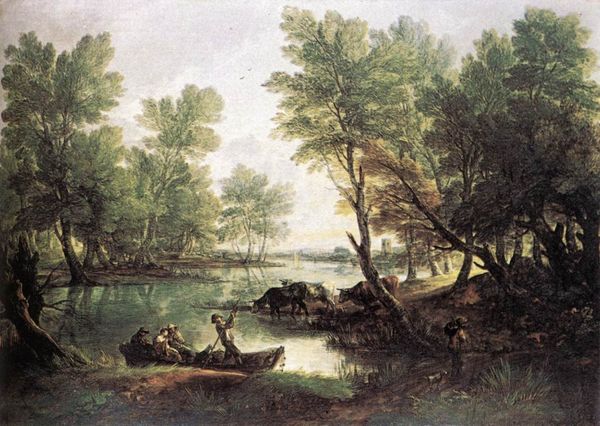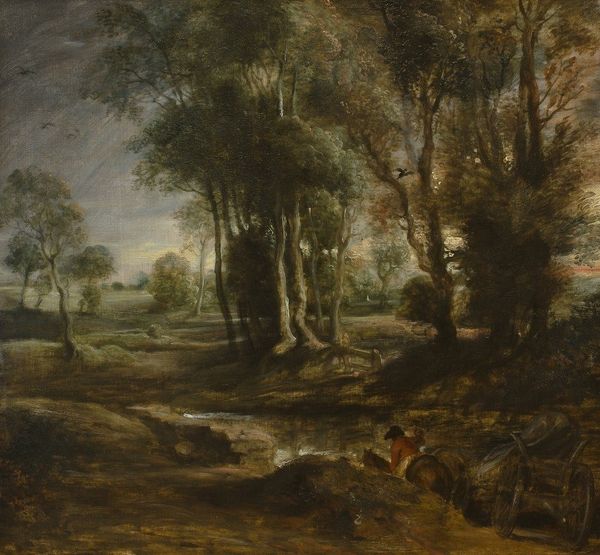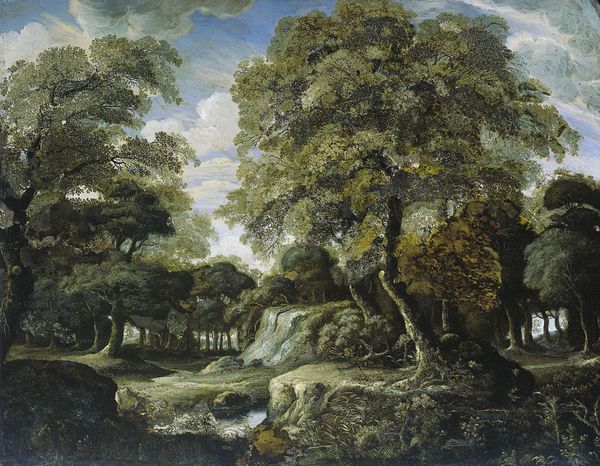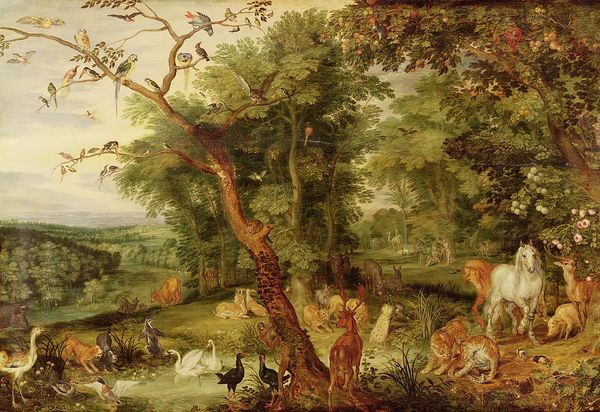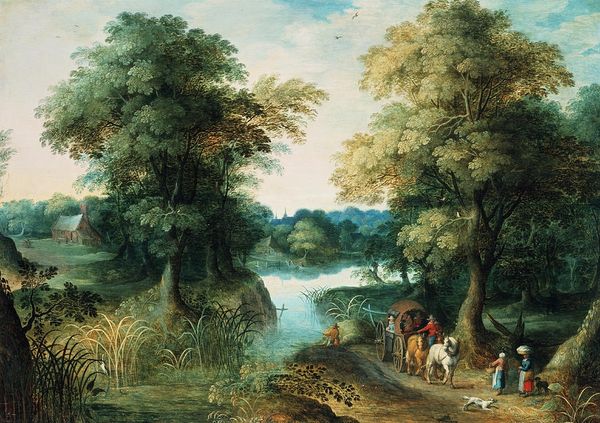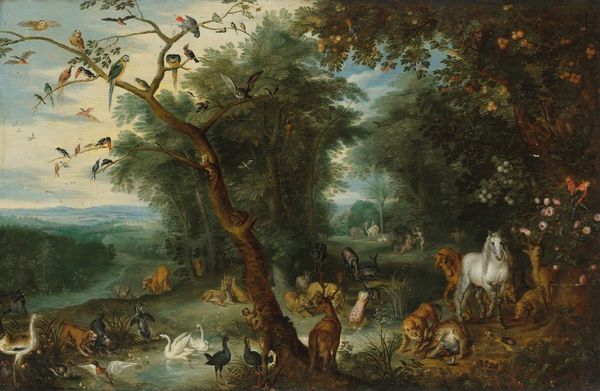
painting, oil-paint
#
allegory
#
baroque
#
painting
#
oil-paint
#
landscape
#
figuration
#
oil painting
#
genre-painting
Copyright: Public domain
Editor: We’re looking at "Landscape with Nymphs and Satyrs" by Paul Bril, painted in 1623 using oil. The scene has such a dreamy and theatrical feel to it. What do you make of the interplay between the natural world and these mythological figures? Curator: Well, considering the period, the early Baroque, these kinds of landscapes were about more than just pretty scenery. They were profoundly shaped by Humanist ideals that re-imagined our relation with nature, harking back to the classical world. What do you think the presence of nymphs and satyrs signifies here? Editor: Maybe an attempt to connect with that classical past, creating a sense of timeless beauty and harmony? It seems almost escapist. Curator: Precisely. It's about constructing an ideal, and it’s doing so at a very particular moment. The image emerges from a social elite who had the leisure to consider what constituted “natural” beauty and who controlled its presentation. Landscape paintings during this period gained popularity as a way for wealthy patrons to display their refined taste and familiarity with classical culture, don't you think? Editor: Absolutely. It's interesting to think of the canvas itself as a stage, where nature is being both celebrated and, in a way, controlled. Are the nymphs and satyrs almost stand-ins for that control, beings from stories designed to bring us closer to understanding and accepting it? Curator: In some respects, yes. The mythological beings subtly validate and legitimize the power dynamics at play. What stories are told, by whom, and for what purposes become key considerations. Editor: So the painting, beautiful as it is, reflects these subtle power structures embedded within the elite society it was created for. Curator: Exactly. Looking closer allows us to question how nature and myth are used to construct meaning, shaping taste and affirming specific social orders. Editor: This really shifts my perspective on these idealized landscapes. It’s more than just escapism; it's about understanding whose vision of escape is being presented. Curator: Indeed. Art offers a powerful entry point to examining society, culture and the politics of imagery.
Comments
No comments
Be the first to comment and join the conversation on the ultimate creative platform.
